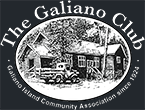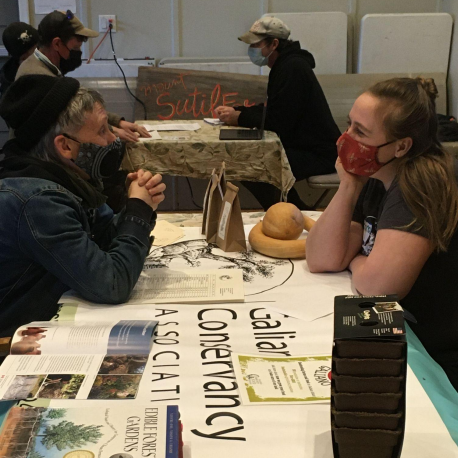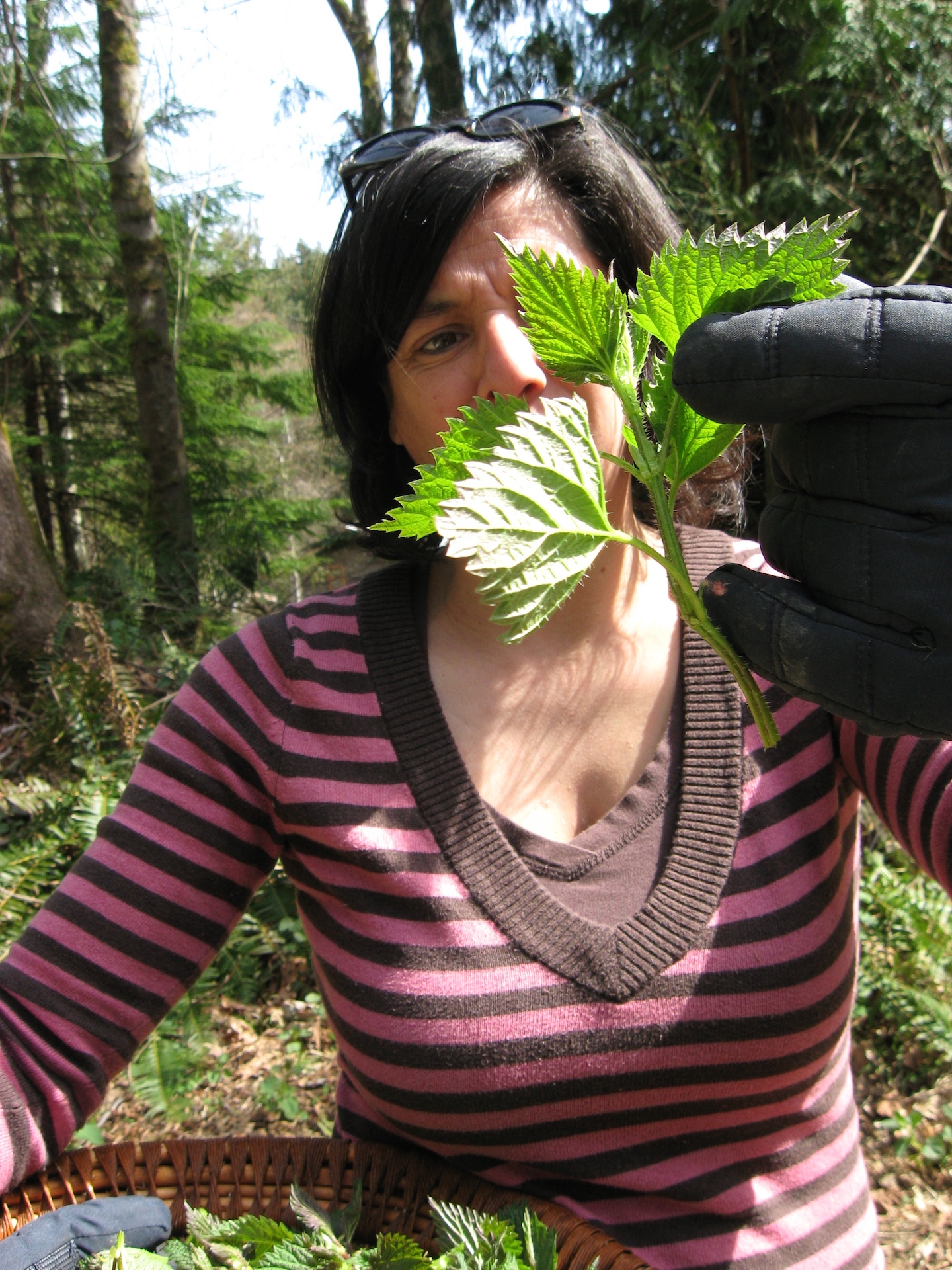Heather Pritchard from Farm Folk / City Folk was the ‘resource person’ for a group discussion on ‘Growing Food Locally with New Models’. The first of the two sessions gravitated naturally to the topic of Community Supported Agriculture, and Heather was asked a wide range of questions on the topic of CSAs. The group present at the discussion also contributed to the things summarized here.
The number of CSAs in British Columbia has grown remarkably. Heather estimates that the number has jumped from three to about twenty six in the last five years.
At its essence, a CSA is a subscription box program $500 to $600 per year with $20 to $25 of food value per box. There are many interpretations but most CSA boxes are not customized per customer, as you would find with Spud. Often a lead farmer will share or buy from other farms to augment the supply and variety in a given CSA box. Adding the produce of several farms together can lead to a more complete offering. With the first CSAs, all produce was divided equally. These days, CSAs tend to guarantee a certain amount, and then provide first dibs on the remainder at a price to its members. Boxes are typically delivered to a depot. At the depot, recipients might trade things they don’t like for things they do after delivery. Sometimes farmer’s markets act as the drop off depot for CSAs.
The primary advantage of the CSA is that money is given in advance to the farmer, and crop yield risk is taken on by the customers (although this is less true these days). Many CSA’s ask for the full amount in advance, allowing them to manage cashflow throughout their season.
A CSA can be started on relatively small plots of land. Five acres can supply a one hundred person CSA. They typically dont’ make a lot of money and The farmer must manage money really well.
Question: What about housing for farm workers?
Answer: Most municipalities permit “trailers”.
Heather had a “hot poultry tip for the week” for us: CSA customers love eggs!
There are many aspects to CSAs that anyone considering starting one should consider:
- Youth Involvement
- Crop Mobs
- Cooperative Farms
- Garden Mentorships
Pricing of Goods Produced
Question: How do you value the food?
Answer: Same value as the local farmers market. Certified Organic crops come with correspondingly higher prices.
Debra Foote mentioned that a specific certified organic website provides prices, with seasonal variations. She said that it’s very important for farmers not to undervalue their product. And when selling to a store, don’t expect to sell at the same price as to a consumer.
FFCF sells their product to the table at a farmers market, and the table sells it at a markup.
Mayne farmers market finds that every table as their market sells for the same price. Galiano lore shows that the farmer with a lot of stock may sell for less because they need to get rid of a larger amount.
Other Models and Distribution Methods
Some examples of some growing models not involving CSAs included Glenn Valley Organic Farm COOP and Horse Lake community farm cooperative which has a campground on site. For operations funded in part by shares. Single shares might be $5000 for a $400,000 or $500,000 farm. Management for operations like these is done via a board of directors, structured however they like.
Try finding a like-minded land owner and make a go of it on a small scale, (even in urban areas!) via a website that can help you find people willing to provide land. See for example: Sharing Backyards
Explore selling products directly to grocers like the Organic Grocer
Direct Farm Gate Sales: Farm gate sales must have a business license, possibly only if you’re selling over a certain amount of product. The threshold might be quite high and may vary with municipality. The Briitsh Columbia Agricultural Council is one resource.
One model from Salt Spring Island involves multiple farms feeding into one distributor : growinguporganic. This project redistributes local organic food to Salt Spring institutions. This is a community development project that isn’t revenue neutral.
Sites you might want to check out include Saannich Organics and Out of our own Backyards
Question: What about growing only for yourself? How small a piece of land do you need to grow most/all your food?
Answer: Even 0.1 acres per person might be useful. Here is a blog entry we found on that topic.




Leave A Comment
You must be logged in to post a comment.